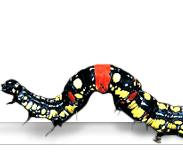Unique flora and fauna
(Video image: Omai (Mai), Sir Joseph Banks and Daniel Charles Solander, by William Parry © National Portrait Gallery, London / National Museum Cardiff / Captain Cook Memorial Museum, Whitby.)
In the video above, special collections librarian Lisa Di Tommaso and botanist Steve Cafferty, both at the Natural History Museum, discuss the scientific importance of the First Fleet collection.
The collection includes over 600 images of a land and its flora and fauna, some of which were completely new to the British and to western science in the late 1700s.
Artists of the First Fleet documented many plant and animal species for the first time, providing benchmark records and detailing some that have since become extinct.

Eastern gray kangaroo, Macropus giganteus and grass tree, Xanthorrhoea sp. George Raper faced the same difficulties as other First Fleet artists in capturing accurate depictions of fauna unfamiliar to them.
Together with specimens and scientific illustrations from the earlier Endeavour voyage, the First Fleet images provide an invaluable historical record of life in eastern Australia before European colonisation changed it forever.
While Captain Cook's Endeavour, landing in Australia in 1770, carried scientists and scientific illustrators, the main aim of the First Fleet was to establish a naval base to secure Australia for the British crown, using convict labour.
As such, the First Fleet artists were not trained in scientific drawing and their images are not scientifically accurate.
One of the artists, convict Thomas Watling, attempted to follow the conventions of scientific illustration. But another, midshipman George Raper, drew more for his own pleasure, creating pictures that were bold, colourful and exuberant.
Despite their lack of scientific accuracy, the images in the First Fleet collection are some of the most important in the Museum, providing a snapshot of a key moment of Australia's history.


